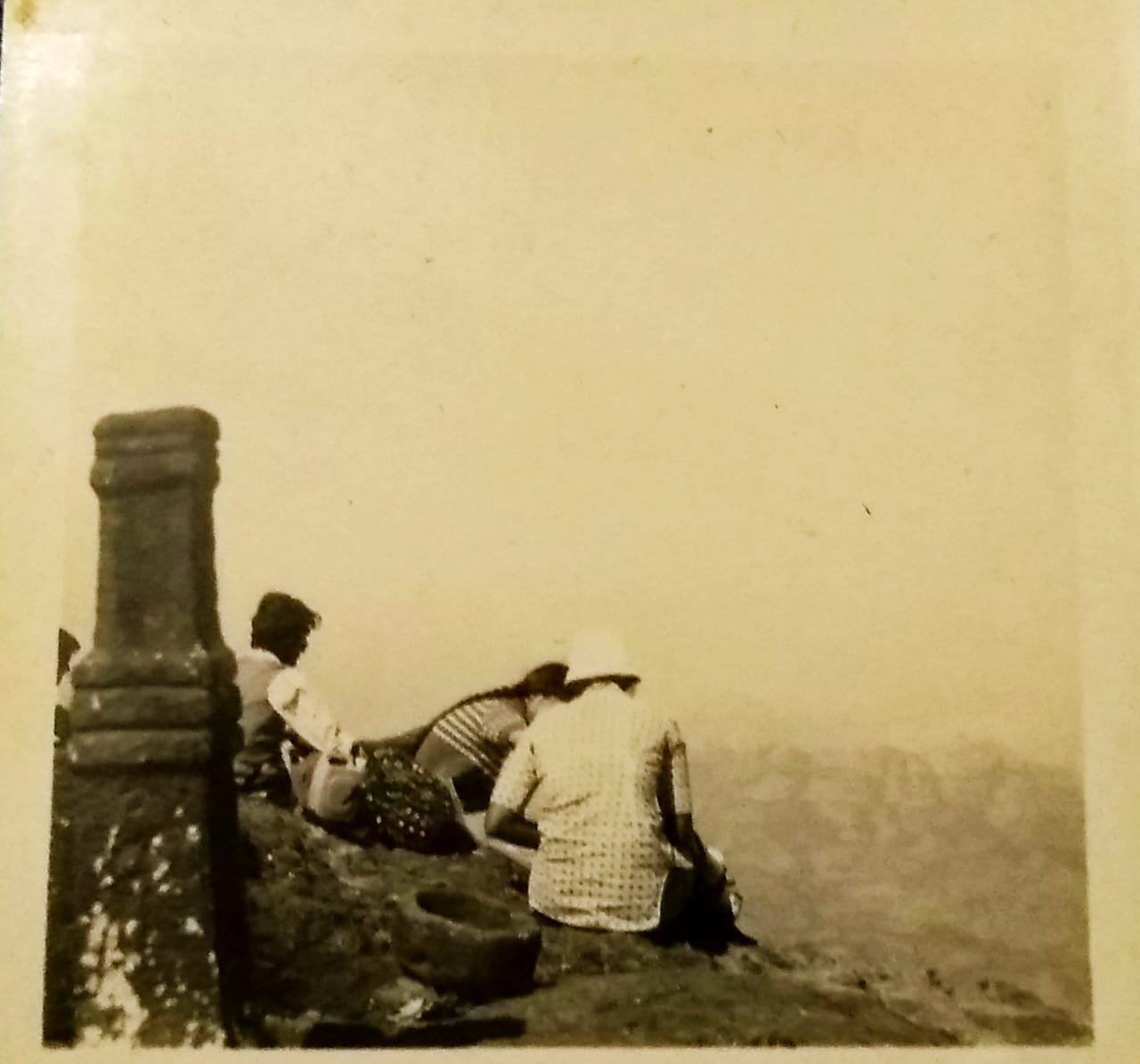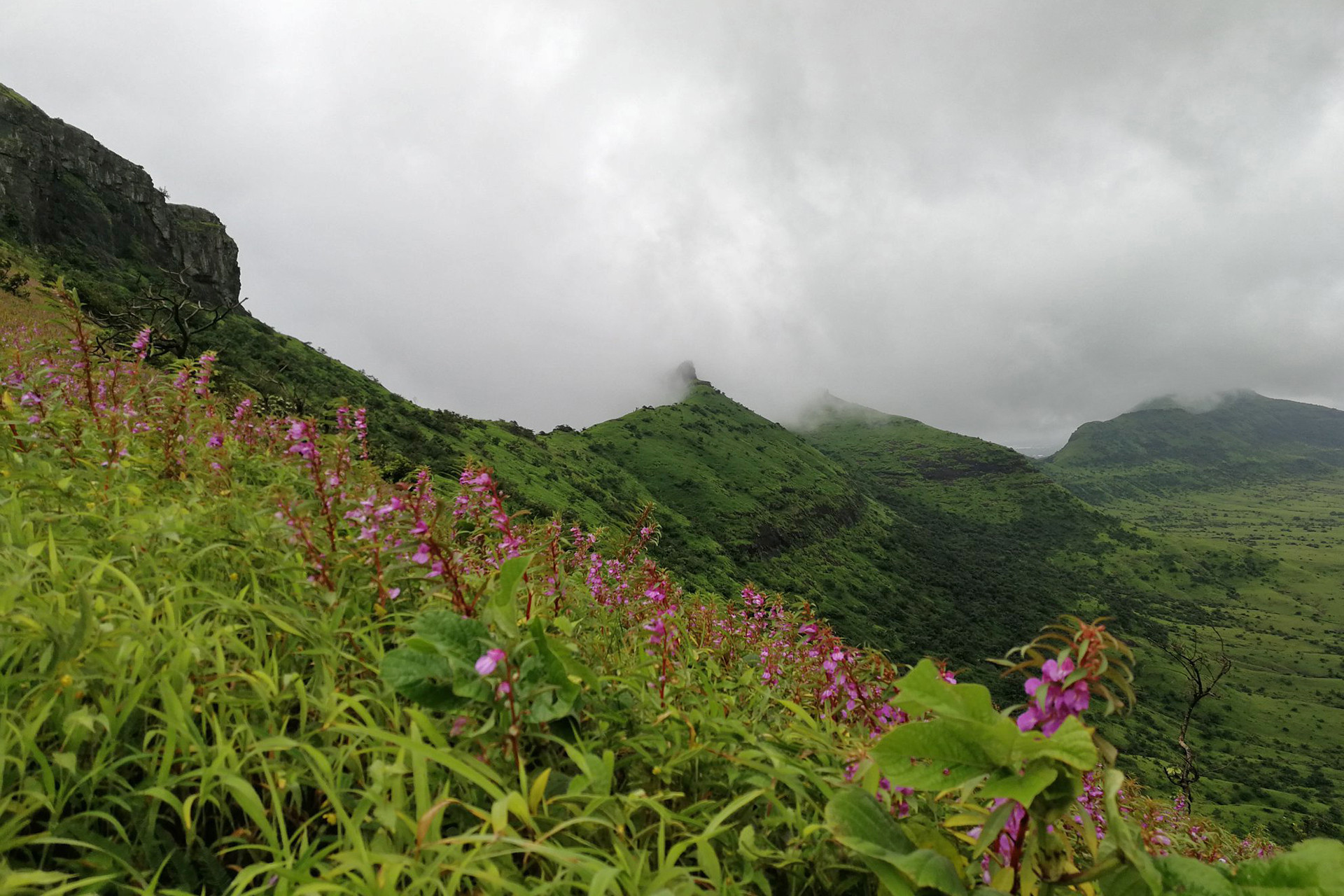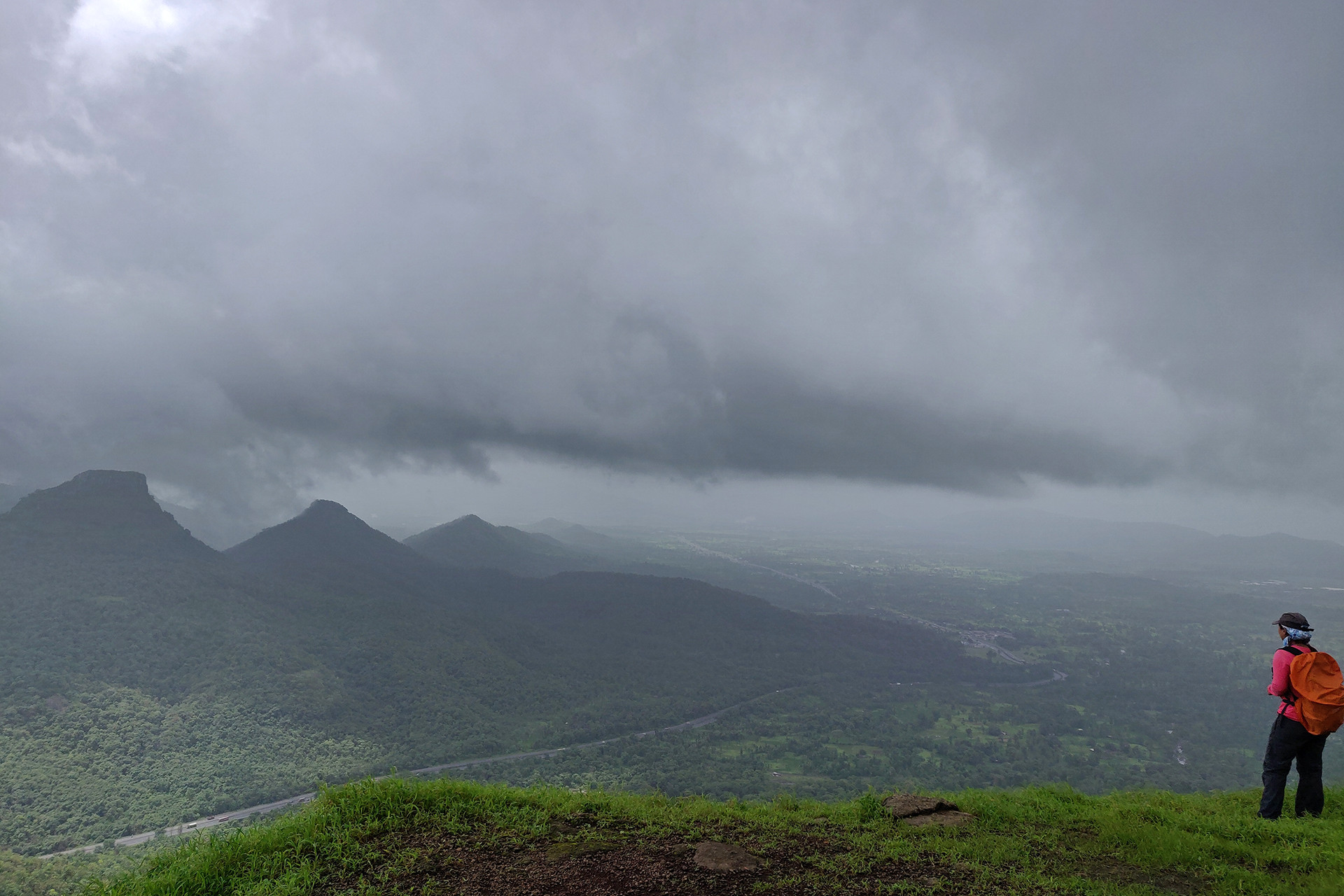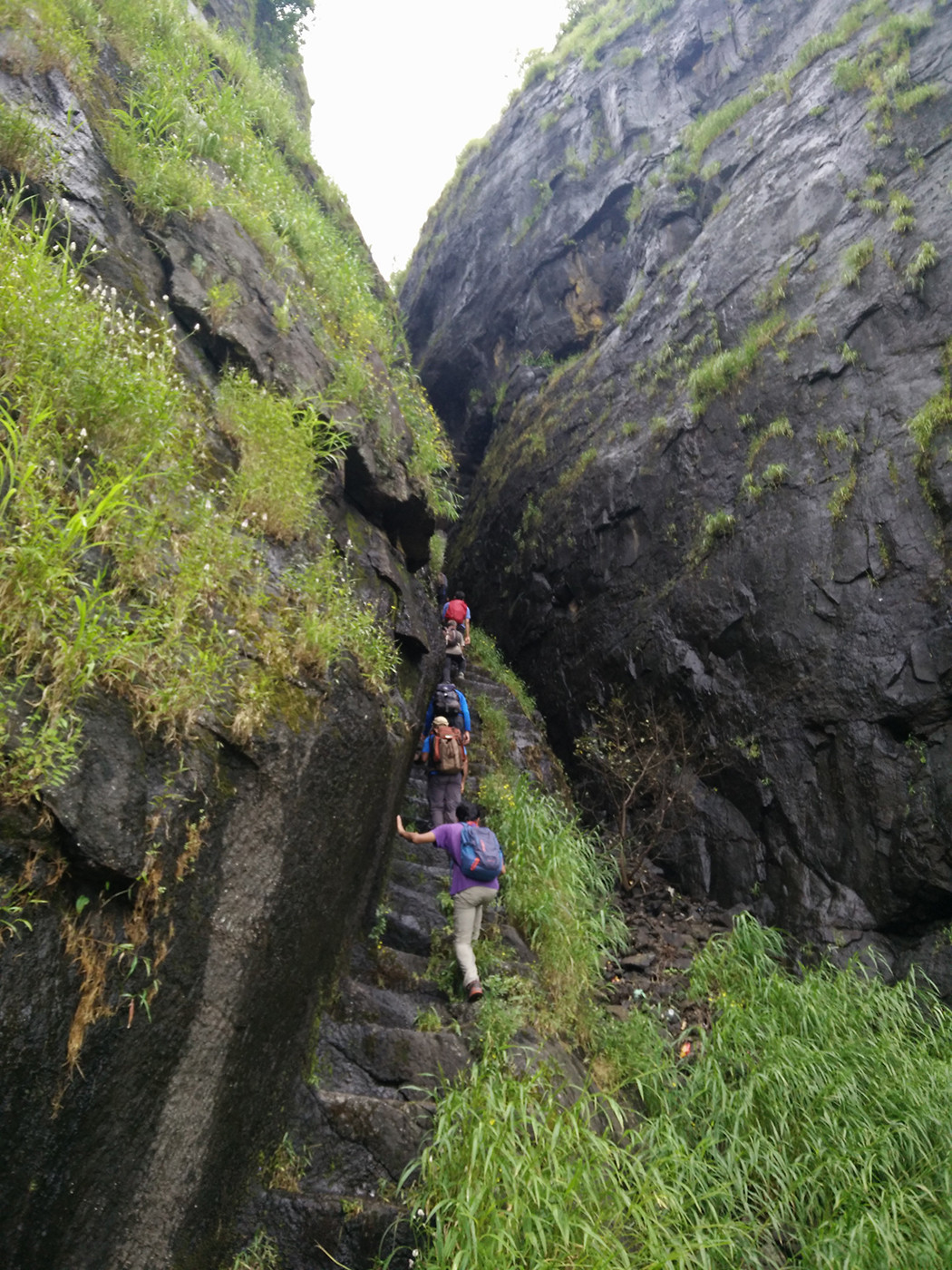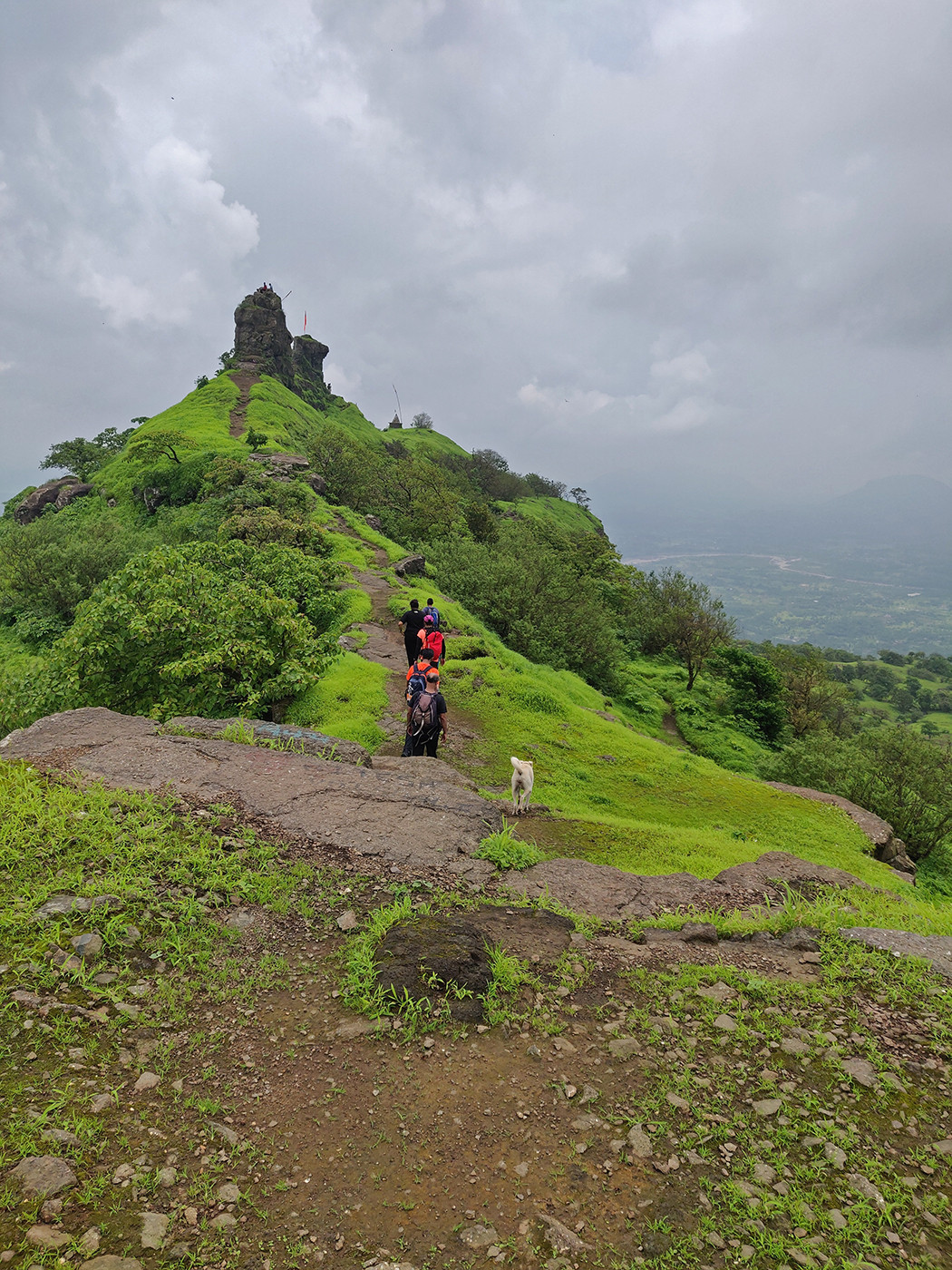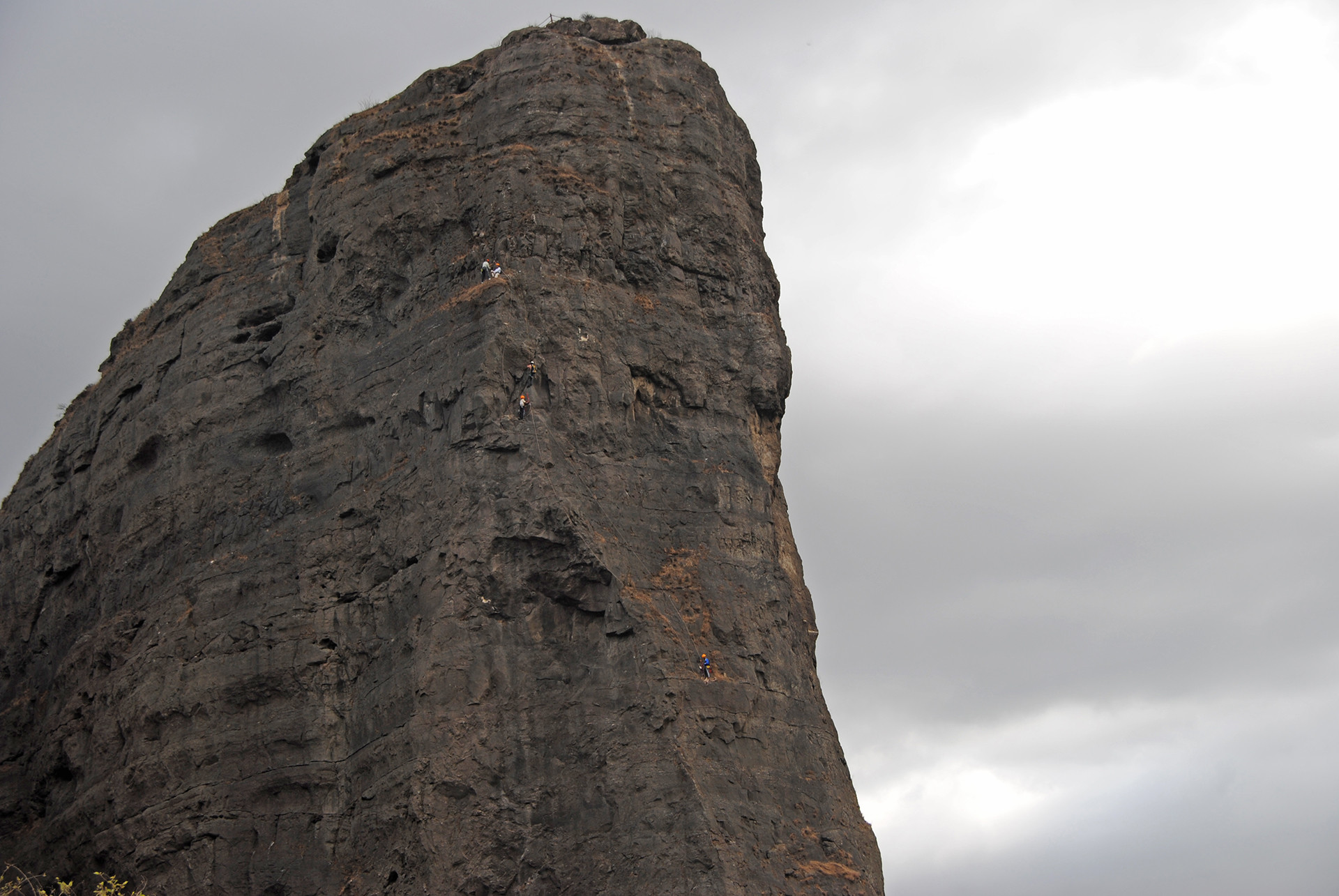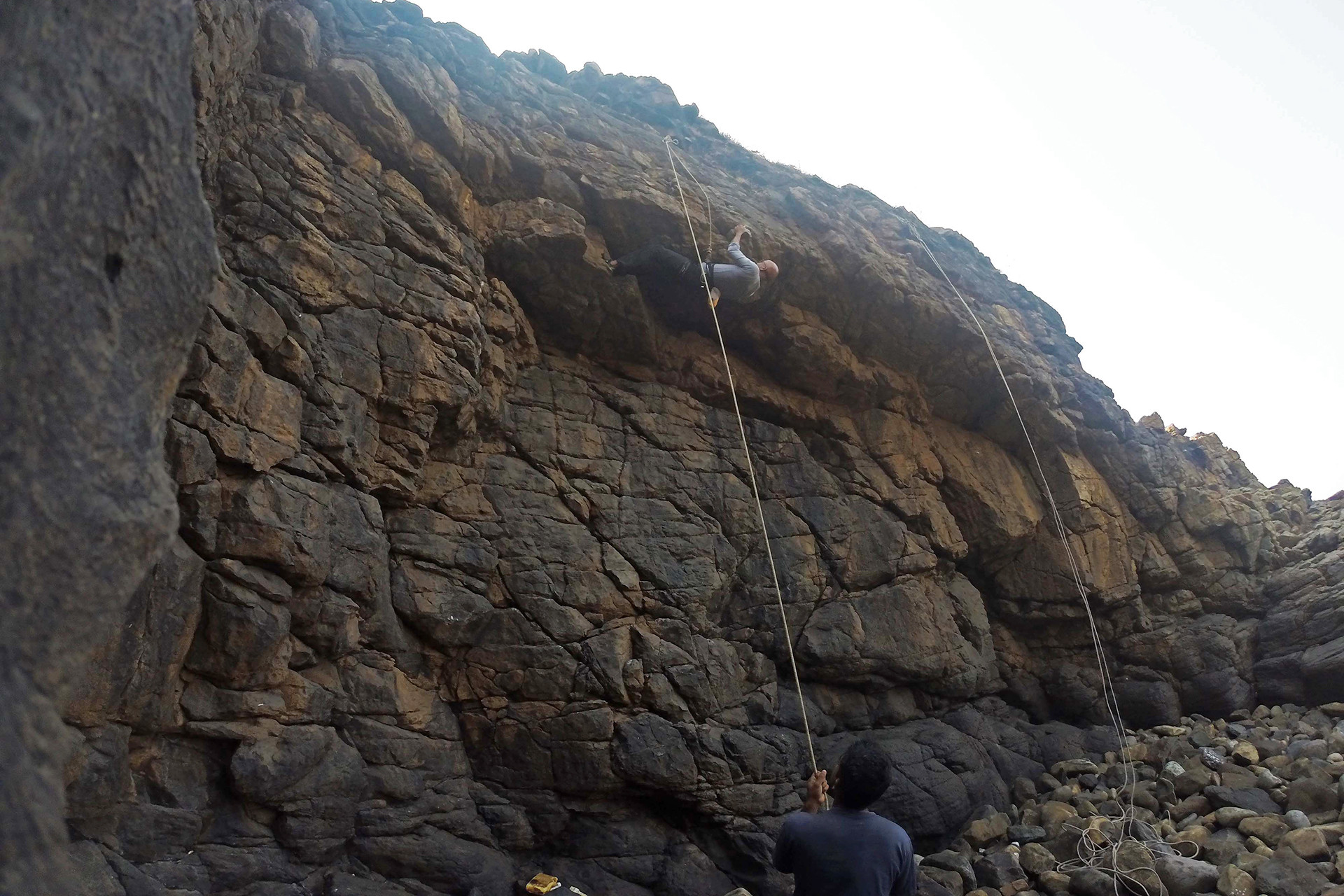In this short span between my finger-tips on the smooth edge and these tense feet cramped to the crystal ledge, I hold the life of man. – Geoffrey Winthrop Young, British climber, poet and educator
I hadn’t read this poem when I started the climb on that sunny, blue-skied afternoon in 1980, on the rock cliffs of Mumbra, 30-odd kilometres outside of Mumbai. I didn’t realise there was a tribe of climbers who were also great poets.
The local train emerging from the tunnel far below was a toy. When I slipped, I shouted, “F***ing b*****d, hold it man!” to Sridhar, who was belaying me: belaying means holding the safety rope.
If you used Newton’s formula of distance and time, you’d say I fell close to a hundred feet. I lived to write this piece only because Sridhar held on to the rope even though it ripped the skin of his palm to a bloody groove.
We climbed without too much regard for safety, because when you are young, you are immortal.
I had moved to the harsher poetry of rock climbing (I call it ‘The Vertical Theatre’), after hiking, which I started with the hiker’s group from my sister’s college, Ramnarain Ruia, in 1977. I remember reaching the top of Mount Kalsubai, the highest peak in Maharashtra, drinking in the sunshine and distilled air, and getting addicted for life. Soon, I had my own group in college, and we set out every weekend, especially in the monsoons.
I use the word trek only for walks that involve being at a height for several days, and hikes for one-day trips. Rock climbing is more technical and needs training. Mountaineering is another discipline altogether.
The Sahyadri mountains in the rains are a separate planet.
When you visit places that the commercial trekking groups have not discovered, you are alone on a mountain, watching yellow sonkadi flowers, members of the sunflower family, juggling droplets in the mist. Sometimes, the fish in the tiny pools nibble at your feet, and sometimes, standing under a waterfall, in a wall of white noise, you forget who you are.
The water dissolves the boundaries between you and the universe.
In the winter, you visit places that are too precarious to be attempted in the monsoon.
The Bhairi cave near the Dhak plateau is out-of-bounds for women, especially if the locals are around. You reach the cave by going up a ladder that is basically a thin tree trunk with branches lopped off, tied to a stone by a creeper. When the trunk sways under your weight, you are bound to ask yourself deep meaningful questions.
The Alang Kulang Madan trio is easily the most adventurous, involving some fairly challenging rock climbing: not recommended for the uninitiated. There is a captivating drone footage of this trek on YouTube.
Maharashtra has over 300 forts in the Sahyadris, and besides your adrenaline and endorphin fix, you get free history lessons and a chance to discover the ingenuity of the men who built them. Kothligad (gad means fort in Marathi) is like a dome, but go closer and you realise the steps are cut inside the ‘kothli’ (innards) of that massive dome. At Naneghat, you discover Brahmi script inscriptions that date back to the 2nd century BC!
If you are planning to enjoy the outdoors, remember you now have one tool we never had – Google Maps. At least in Maharashtra, most starting points of hikes are easily found. And thankfully, many conscientious youngsters have formed groups that are repairing the forts, marking trails and cleaning the garbage left behind by insensitive hikers.
The second time “I held the life of man” was in 2013, while climbing the 300-odd-feet-high Duke’s Nose pinnacle in Lonavala, between Mumbai and Pune.
Six of us were climbing, there were four sections, and when I was negotiating the final one, it started raining. So the tool I was using to go up the rope called the jumar, started slipping. When I somehow reached the top, our leader, Kaivalya Varma, asked me to take off all my gear urgently, because… he was right!
Just a few seconds after I took off all the metal, a lightning struck a solar panel a few feet away.
If I had had metal on me then, I could have been toast too.
But if you ask me which experience gave me the greatest satisfaction over all the years of climbing, I would say the IFSC Bouldering World Cups I was actively involved in in 2016 and 2017.
Each year, cities around the world bid for the Bouldering World Cup – eight cities host them during the 12 months. In 2016 and 2017, Navi Mumbai won the bid.
But that’s not the pinnacle we climbed.
Both events were voted the Best of that Year by the athletes themselves!
And the artificial walls that were built under the wisdom of the famous Abhijit Burman aka ‘Bong’ were voted better than the imported ones by the officials of the International Federation of Sport Climbing (IFSC).
Rock climbing has now entered the Olympics, and there are three disciplines (like gymnastics has six for men, four for women): lead, speed, bouldering. Soon, we will start preparing to get a new generation of climbers ready for the Olympics!
In one of the three books of fiction I’ve written, I’ve written a poem about the relationship between human beings and the universe:
“I thought the sky was empty
Until I fell through it
And landed on a web of threads
Woven out of me”
Through invisible threads we can’t see in the glaring neon lights of the city.
Through the silence we can’t hear in the desperate cacophony of ambition.
That’s what hiking and trekking and rock climbing and mountaineering do – they reconnect you to the rest of the universe.
Do try it at least once.
